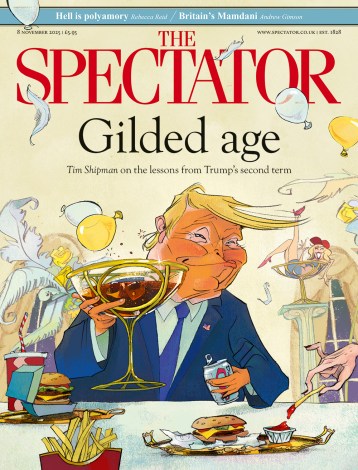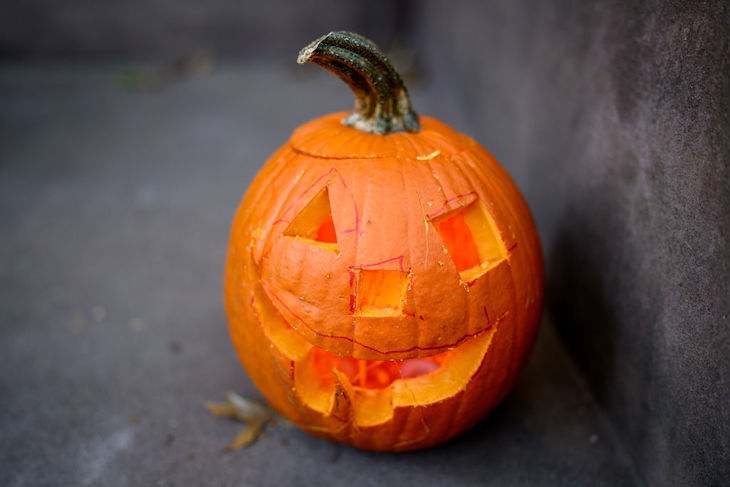Hallowe’en is nearly over for another year. Thank goodness, you might say. Each October, many Brits scratch their heads about when this festival became such a big thing. I am as guilty as the next person in doing so: only last weekend I reflected, with a combination of curiosity and weariness, that ‘when I was young’, October 31 was simply not as hotly anticipated a date in the calendar. The blame for Hallowe’en inflation is often directed at the Americans. But it’s not fair to blame our US cousins. Hallowe’en is something of an ancient Christian tradition.
Strip away crass commercialisation and that was what Hallowe’en and the days which follow once did for Christianity
There is little doubt that the narrow commercialised interpretation of Hallowe’en has gathered momentum over the last decade or two. You can now buy a dizzying array of Hallowe’en decorations from faux-fur pumpkins through glow-in-the-dark plastic skeletons to tableware decorated with bats.
This miasma of opportunities to spend money is a recent phenomenon, and you can view it as another grotesque element of consumer society or harmless fun, according to your taste. But we should not let it obscure the fact that Hallowe’en has been with us for many centuries, and, even as religious observance is waning in the West, may still tell us something important about ourselves.
November 1 is All Saints’ Day or All Hallows’ Day, a Christian solemnity which honours all the saints of the Church, known and unknown. It has been celebrated on that date since at least the 9th century AD, when Pope Gregory IV extended to the whole Church a feast which was already decades, perhaps centuries, old. It was popular in Ireland and Northumbria, and the influence of Alcuin of York, who became a close adviser of the Emperor Charlemagne, led to its observance across the Carolingian Empire.
From the very beginning, the commemoration of All Saints’ Day on November 1, like many holy days, included a vigil the previous evening. In an unusual example of etymological influence, it was Lowland Scots which was the source of ‘even’ contracted to ‘e’en’ for the evening before a celebration; so October 31 became All Hallows’ E’en and thence Hallowe’en.
For nearly a thousand years, the triduum or three days of Allhallowtide – Hallowe’en, All Hallows’ Day and All Souls’ Day, from October 31 to November 2 – has been a solemn time in the calendar, when Christians remember and pray for the souls of the departed, especially honouring saints and martyrs. But the essential element in its mediaeval imagining was that it was to its core a mutual observance.
Allhallowtide was, and for some still is, a powerful illustration of the intimate spiritual bonds between the living and the dead, a relationship which connected the Church triumphant, those in Heaven, with the living as the Church militant and the dead of the Church penitent. Christians prayed for souls in purgatory to speed the process of purification and their eventual passage to Heaven; but they also offered intercessory prayers to the saints who could help those on earth through their access to the treasury of all merit, the accumulated and inexhaustible good works of Christ and others.
No matter what your theological views, there is surely something significant in that conception offered by Allhallowtide in the centuries before the Reformation; that there was some sense of a unified and indivisible community which encompassed the living, the dead and those not yet born. The idea of communion with our ancestors, whatever form it takes, and by extension a feeling of continuity with and responsibility towards future generations is deeply ingrained in us, perhaps a universal human instinct.
Martin Luther, though he was not alone, rejected this interdependency. When he summarised his theological views in the Schmalkald Articles of 1537, he wrote trenchantly that ‘the invocation of saints is… one of the Antichrist’s abuses that conflicts with the chief article and destroys the knowledge of Christ… [it is] neither commanded nor counselled, nor has it any warrant in Scripture’.
This tore a gaping hole in the relationship between the living and the dead, and grieved orthodox Catholics. St Thomas More took up his pen again and again to defend purgatory, intercessory prayer and mutuality between the quick and the dead, including The Supplycatyon of Soulys (1530), and for Luther his venom knew no bounds. In his Responsio ad Lutherum of 1523, More claimed the right ‘to throw back into your paternity’s shitty mouth, truly the shit-pool of all shit, all the muck and shit which your damnable rottenness has vomited up’.
This mattered to More and matters to us, whether Catholic, Protestant, non-Christian or atheist. Our identities are shaped by what has gone before, and they in turn shape the identities of our descendants. Strip away crass commercialisation and that was what Hallowe’en and the days which follow once did for Christianity: they reminded us of the unbroken connection from the past into our present and stretching into the future.
That reminder is very old indeed, and a society which feels increasingly atomised, with communities, classes, nations and generations more isolated from each other than ever, could draw strength from it. Today, on Hallowe’en, dress up, feel the thrill of fright, shiver at stories of witches and ghosts. But do something else: think of yourself not just as an individual, an island entire of itself, but as part of something greater. Part of your own strand of humanity.








Comments